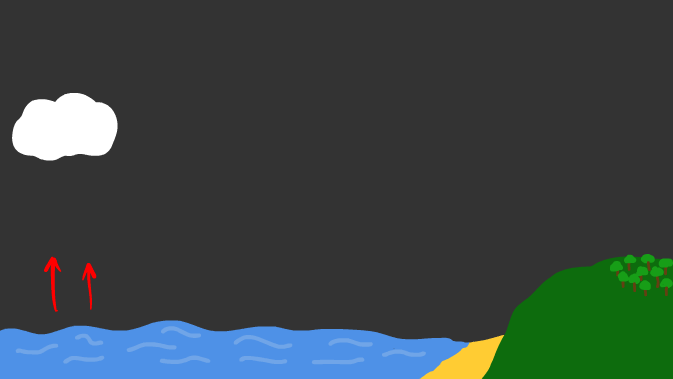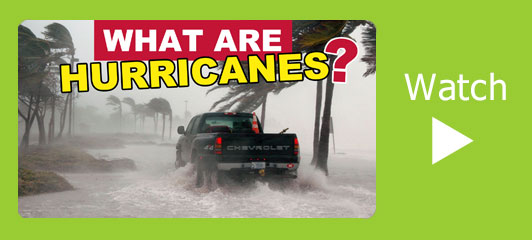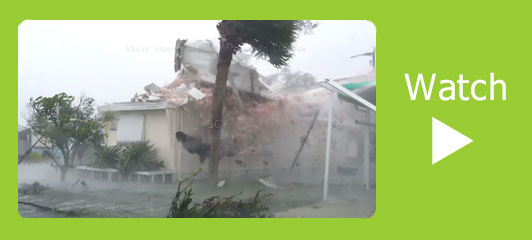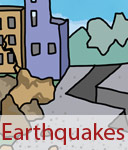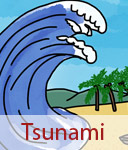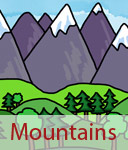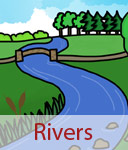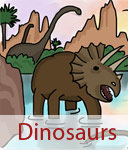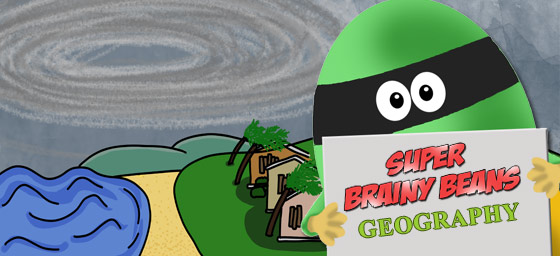
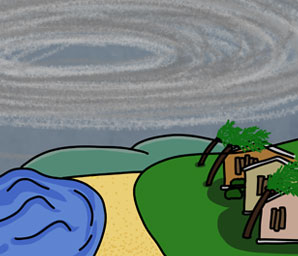
Hurricanes for kids
Hurricanes for kids learning in KS2 at Primary School. Homework help with what hurricanes are and how they are formed. Read about the impact of hurricanes on the environment.
What is a hurricane?
A hurricane is a huge, swirling storm that forms over warm ocean waters and moves toward land. It brings extremely strong winds, heavy rain, and big waves called storm surges. Hurricanes can cause serious damage when they reach land, like flooding homes, knocking down trees, and cutting off electricity.
Hurricanes are part of a group of storms called tropical cyclones. They are very dangerous, but they also help balance the Earth's weather by moving heat from the tropics to cooler places.
What causes a hurricane?
Hurricanes don’t just appear out of nowhere—they are carefully “built” by nature when the ocean and the atmosphere work together. It’s like a giant recipe that needs the right ingredients:
- Warm Water – The ocean must be at least 27°C (80°F). Warm water is like fuel for the storm, giving it the energy it needs to grow.
- Rising Air – The warm water heats the air above it, and this moist air rises up into the sky. As it rises, more air rushes in to take its place, creating a cycle.
- Spinning Motion – Because the Earth spins, the rising air begins to swirl. This effect is called the Coriolis effect, and it makes the storm spin in a circle.
- In the Northern Hemisphere, hurricanes spin anticlockwise.
- In the Southern Hemisphere, they spin clockwise.
- Energy Boost – As the storm sucks up more warm, moist air, it grows larger and stronger, forming towering clouds and powerful winds.
- Hurricane Strength – When the winds inside the storm reach at least 74 mph (120 km/h), the storm is officially called a hurricane.
Hurricanes need constant warm water to survive. That’s why they usually form in tropical oceans and why they begin to weaken when they:
- Move over cooler water, where there’s less energy.
- Travel across land, where there’s no warm ocean to “feed” them.
What is the difference between a hurricane, typhoon and a cyclone?
You might hear people talking about hurricanes, typhoons, or cyclones and wonder if they are different types of storms. The truth is—they are all the same kind of storm, a tropical cyclone! The only difference is where in the world they happen:
Hurricanes
These storms are called hurricanes when they form in the North Atlantic Ocean, the Central North Pacific Ocean, or the Eastern North Pacific Ocean.
Example: Hurricanes that hit the Caribbean, the United States, or Mexico.
Typhoons
In the Northwest Pacific Ocean, especially near Japan, the Philippines, and China, the same storm is called a typhoon.
Example: Typhoon Haiyan in the Philippines.
Cyclones
In the South Pacific Ocean and the Indian Ocean, including places like Australia, India, and Madagascar, the storms are known as cyclones.
Example: Cyclone Idai in Mozambique.
So, whether it’s called a hurricane, typhoon, or cyclone, it’s still the same powerful tropical storm—with strong winds, heavy rain, and the potential to cause lots of damage. The name just depends on where it forms on our planet.
How fast and strong are hurricane winds?
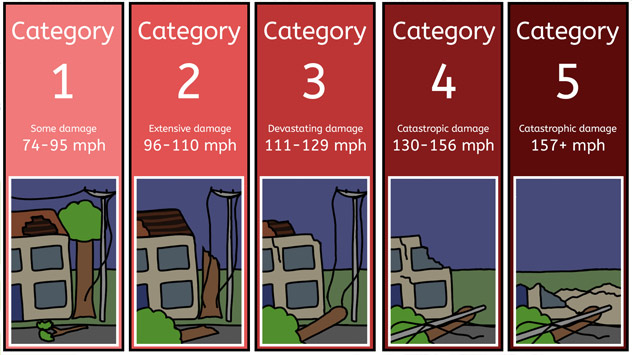 Hurricane winds are incredibly strong and fast. They start at 74 mph (120 km/h), which is as fast as a speeding car. In the strongest hurricanes, winds can go over 150 mph (240 km/h)—fast enough to tear roofs off houses, knock over trees, and even pick up cars!
Hurricane winds are incredibly strong and fast. They start at 74 mph (120 km/h), which is as fast as a speeding car. In the strongest hurricanes, winds can go over 150 mph (240 km/h)—fast enough to tear roofs off houses, knock over trees, and even pick up cars!
Hurricanes are measured by their wind speeds using the Saffir-Simpson Scale:
- Category 1: 74–95 mph (can cause some damage).
- Category 2: 96–110 mph (can cause moderate damage).
- Category 3: 111–129 mph (can cause major damage).
- Category 4: 130–156 mph (very severe damage).
- Category 5: 157 mph or more (catastrophic damage).
Hurricanes are so big that they can cover entire states or countries.
What is the eye of the storm?
In the middle of a hurricane, there is a strange and surprising place called the eye of the storm. The eye is a calm, clear area right in the centre of the hurricane. While the outer parts of the storm have powerful winds, heavy rain, and lightning, the eye is often quiet, with light winds and even sunshine.
The eye is usually shaped like a circle and can be 30–50 km wide (that’s about the size of a big city!). Around the eye is the eyewall, which is the most dangerous part of the hurricane. The eyewall has the strongest winds and heaviest rainfall, making it extremely powerful and destructive.
The impact of hurricanes on people and the environment
Hurricanes are some of the most powerful storms on Earth, and when they strike, they can change both the land and people’s lives in dramatic ways.
Impact on people
- Homes and communities: Hurricanes can blow the roofs off houses, smash windows, and even flatten entire neighbourhoods. Floodwaters can rise so high that families have to leave their homes and find shelter elsewhere.
- Everyday life: Schools, shops, and hospitals may be damaged or destroyed, making it hard for people to get the things they need. Power lines often come down, which means no lights, no internet, and sometimes no clean drinking water.
- Health and safety: Injuries often happen during the storm, but even after it’s gone, standing floodwater can spread diseases. People may also struggle to find enough food and clean water.
- Long-term struggles: Rebuilding after a hurricane can take months or even years, and many families may never get back everything they lost.
Impact on the environment
- Land and soil: Strong winds and heavy rains wash away soil, leaving farmland unusable. Saltwater from storm surges can soak into the ground, harming crops and making it hard for plants to grow.
- Forests and wildlife: Trees can be ripped out of the ground, leaving animals like birds, insects, and mammals without shelter. Some animals are forced to move far away from their homes to survive.
- Oceans and reefs: The powerful waves stirred up by hurricanes can break apart coral reefs, which are important homes for sea creatures. This makes it harder for fish and other marine life to survive.
- Flooding and pollution: Floodwaters can carry rubbish, chemicals, and sewage into rivers and oceans, polluting the water and harming both people and wildlife.
Even after the storm has passed, the damage doesn’t just disappear. It can take years for communities to rebuild and for nature to recover, making hurricanes one of the most destructive natural disasters on our planet.
What have been the most destructive hurricanes?
Throughout history, some hurricanes have been so powerful that they left entire cities underwater, destroyed thousands of homes, and changed communities forever. These are some of the most destructive hurricanes ever recorded, judged by their strength, the damage they caused, and the lasting impact on people and places.
Hurricane Katrina- 2005
Location: U.S. Gulf Coast (especially Louisiana, Mississippi)
Top wind speed: 175 mph, Category 5
Damage: $160 billion
Impact: One of the deadliest hurricanes in U.S. history, Katrina caused massive flooding in New Orleans when levees broke, leaving much of the city underwater. It led to over 1,800 deaths and displaced thousands of people.
Hurricane Harvey - September 2017
Location: Texas (especially Houston)
Top wind speed: 130 mph, Category 4
Damage: $125 billion
Impact: Harvey dropped an incredible amount of rain, leading to record flooding in Houston and surrounding areas. It caused widespread damage, left tens of thousands of homes destroyed and left 107 people dead.
Hurricane Maria - September 2017
Location: Puerto Rico, Dominica, U.S. Virgin Islands
Top wind speed: 175 mph, Category 5
Damage: $91.6 billion
Impact: Maria devastated Puerto Rico, causing widespread power outages, destroying homes, and leaving the island without power for months. It resulted in 3,059 deaths and a long-lasting humanitarian crisis.
Hurricane Irma - September 2017
Location: Caribbean, Florida
Top wind speed: 180 mph, Category 5
Damage: $77 billion
Impact: One of the strongest Atlantic hurricanes ever recorded, Irma caused massive destruction across the Caribbean islands and parts of Florida. Its powerful winds and storm surges damaged buildings and left many without power. There were 134 deaths.
Hurricane Sandy - October 2012
Location: U.S. East Coast (especially New York and New Jersey)
Top wind speed: 115 mph, Category 3
Damage: $65 billion
Impact: Known as "Superstorm Sandy," it caused severe flooding, especially in New York City, and damaged thousands of homes and businesses. Sandy's storm surge caused power outages and left millions of people without electricity. It was the largest Atlantic hurricane on record spanning 1,150 miles (1,850 km) wide. There were 254 deaths.
Hurricane Mitch - November 1998
Location: Central America (especially Honduras and Nicaragua)
Top wind speed: 180 mph, Category 5
Damage: $6 billion
Impact: Mitch caused deadly mudslides and flooding, killing 11,374 people, mostly in Honduras and Nicaragua. It was one of the most lethal hurricanes on record in the Western Hemisphere.
The Great Galveston Hurricane- September 1900
Location: Galveston, Texas
Top wind speed: 145 mph, Category 4
Damage: $30 million (at the time; billions today)
Impact: This is the deadliest hurricane in U.S. history, killing between 6,000 and 12,000 people. It destroyed much of the city of Galveston, which was completely flooded by the storm surge.
 Stop Disasters Game
Stop Disasters GameLearn the risks posed by natural hazards and manage your resources. Build schools, hospitals, housing and defences to protect the local population.
How can we stop hurricanes?
Right now, there is no way to completely stop a hurricane. Hurricanes are natural forces of nature that are far too powerful for humans to control. However, scientists and engineers are always studying them to see if we can weaken hurricanes or reduce the damage they cause. Here are some of the main ideas:
- Cooling the water: Hurricanes need very warm ocean water to form and grow. If the water was cooler, hurricanes wouldn’t be as strong. Some scientists have thought about using pumps or machines to bring colder water up from the deep ocean. But the ocean is so big that this would be very difficult and expensive.
- Breaking the winds: Hurricanes spin in a huge circle. Some experiments suggest that aeroplanes or drones could drop special materials or even spray tiny particles into the atmosphere to interrupt the spinning motion. So far, this has only been tested in theories and computer models—it’s not something we can actually do yet.
- Building better cities: While we can’t stop the storm itself, people can prepare by designing stronger buildings, building sea walls and flood barriers, and making emergency plans. This way, even if a hurricane hits, the damage and loss of life can be much smaller.
For now, the best defence against hurricanes is being prepared. This means listening to weather warnings, having evacuation routes, and making sure people know what to do if a hurricane is coming.
Facts about hurricanes
- Hurricanes are one of the largest storms on Earth, and the eye in the centre of the storm is calm and quiet.
- A single hurricane can release the same amount of energy as 10,000 nuclear bombs in one day!
- Hurricanes in the Northern Hemisphere spin counterclockwise, but in the Southern Hemisphere, they spin clockwise.
- Hurricanes can dump 9 trillion litres of rain per day—enough to fill millions of swimming pools!
- The word “hurricane” comes from “Huracan,” a storm god, according to the beliefs of the ancient Taino people.
- The longest-lasting hurricane, Hurricane John (1994), lasted 31 days.
How to stay safe during a hurricane
Hurricanes can be very dangerous, but knowing what to do before, during, and after the storm can make a big difference.
Before the storm
- Pack an emergency kit: Fill it with food that won’t go bad, bottles of water, flashlights, batteries, a first-aid kit, and any important medicines.
- Have an evacuation plan: Know where the nearest shelters are and the safest routes to get there. Practice with your family so everyone knows what to do.
- Protect your home: Close and lock all windows, board them up if possible, and bring in anything outside that could blow away, like garden furniture, bikes, or toys.
- Stay informed: Watch the weather forecast or listen to updates so you know when the storm is expected to arrive.
During the storm
- Stay indoors: Never go outside during the hurricane, even if it looks calm. Sometimes the “eye” of the storm passes over, and the strong winds will come back quickly.
- Stay away from windows: Strong winds can break glass. The safest places are inside rooms without windows, such as bathrooms, hallways, or closets.
- Listen for updates: Use a battery-powered radio or TV to hear news, as electricity may go out.
After the storm
- Be cautious outside: Floodwaters may be deeper than they look and can hide dangerous objects. Never walk or drive through them.
- Avoid downed power lines: They can still carry electricity and be extremely dangerous.
- Wait for the all-clear: Only return home if local authorities say it’s safe. Even after the storm, buildings may be unstable or areas may still be flooded.
Remember: Hurricanes are powerful, but being prepared and staying calm can help keep you and your family safe.

